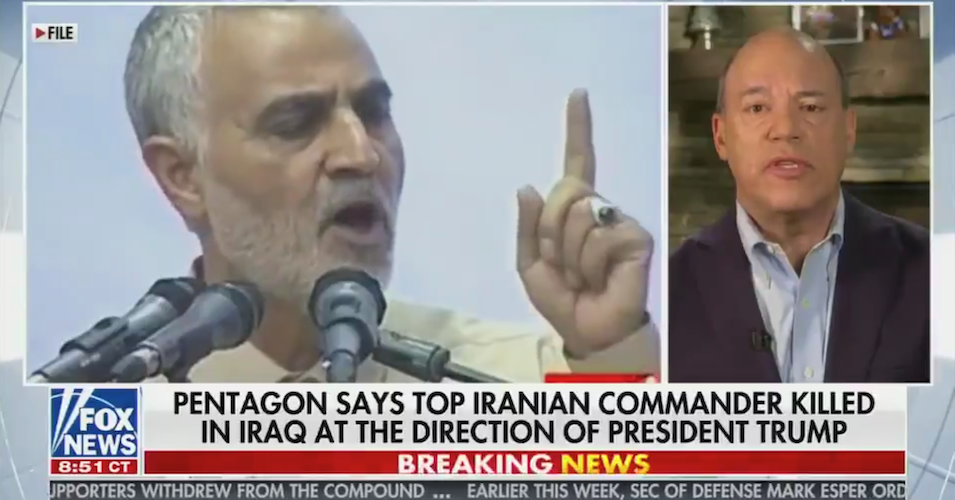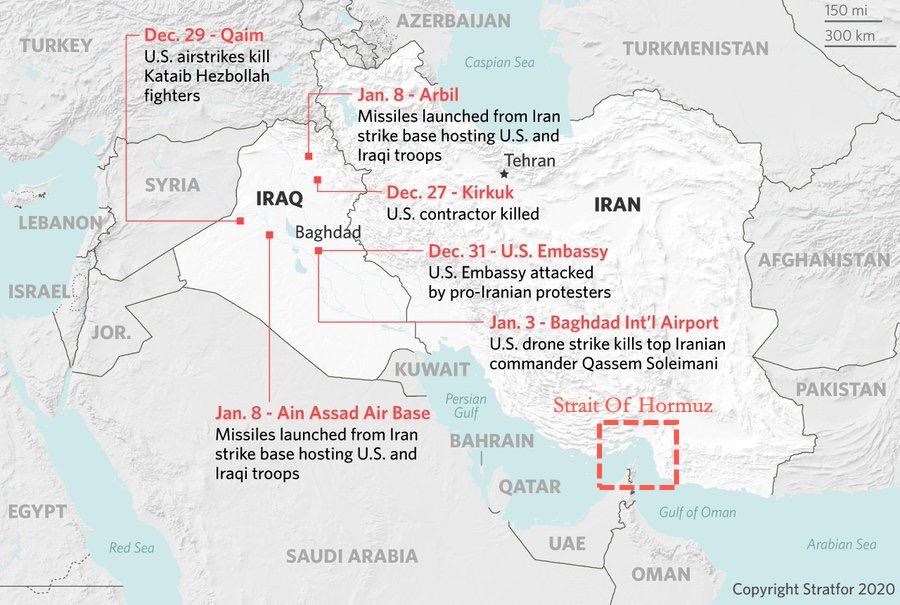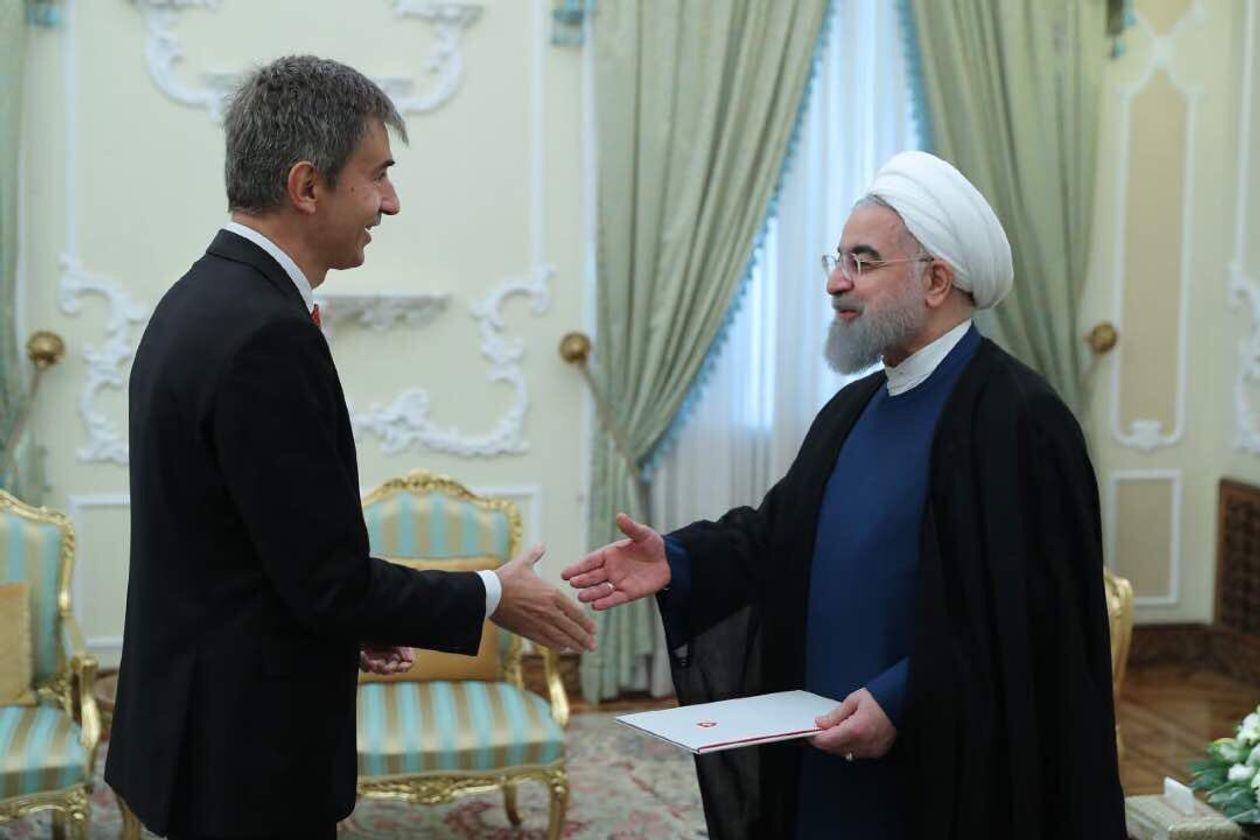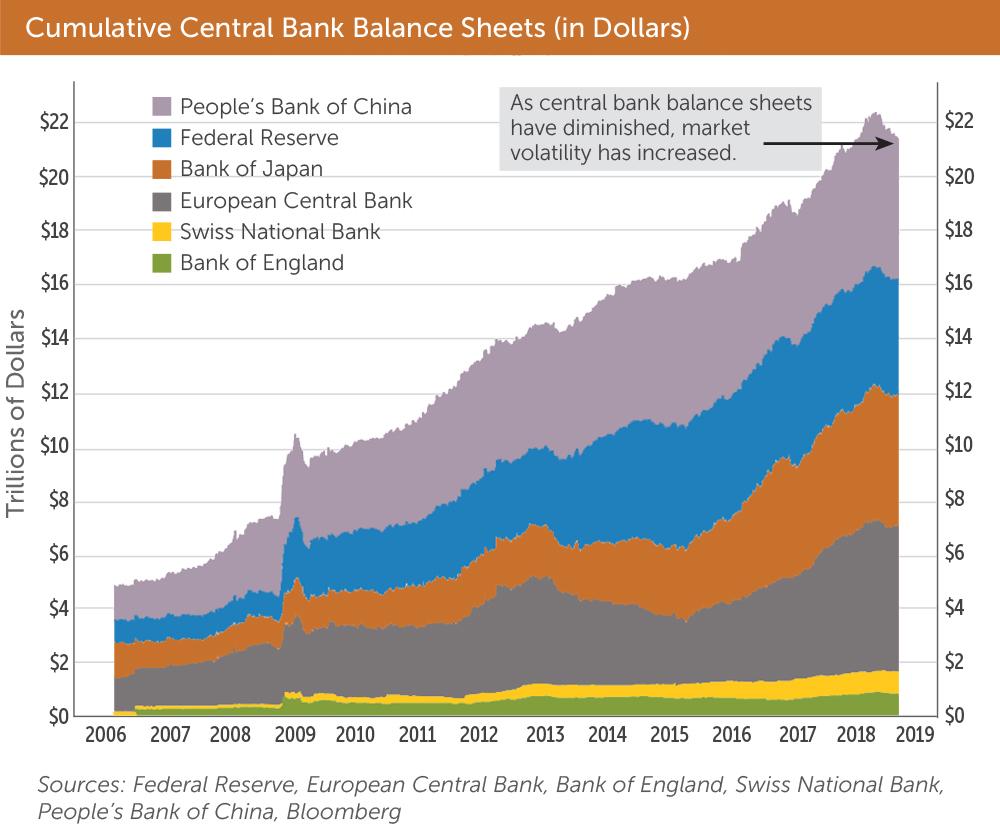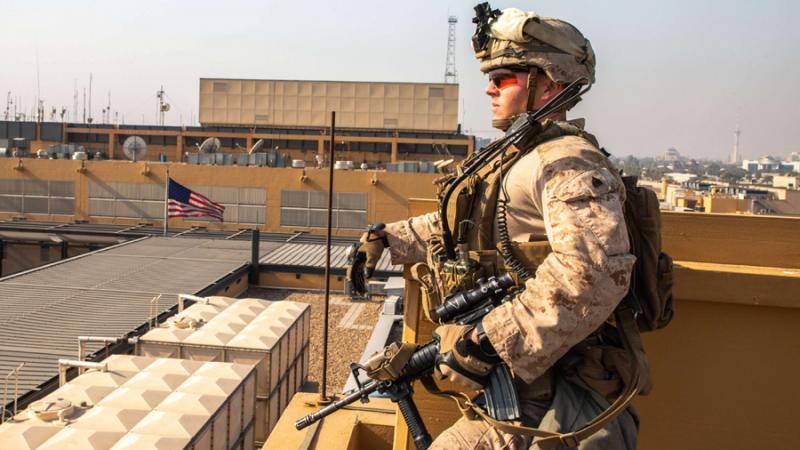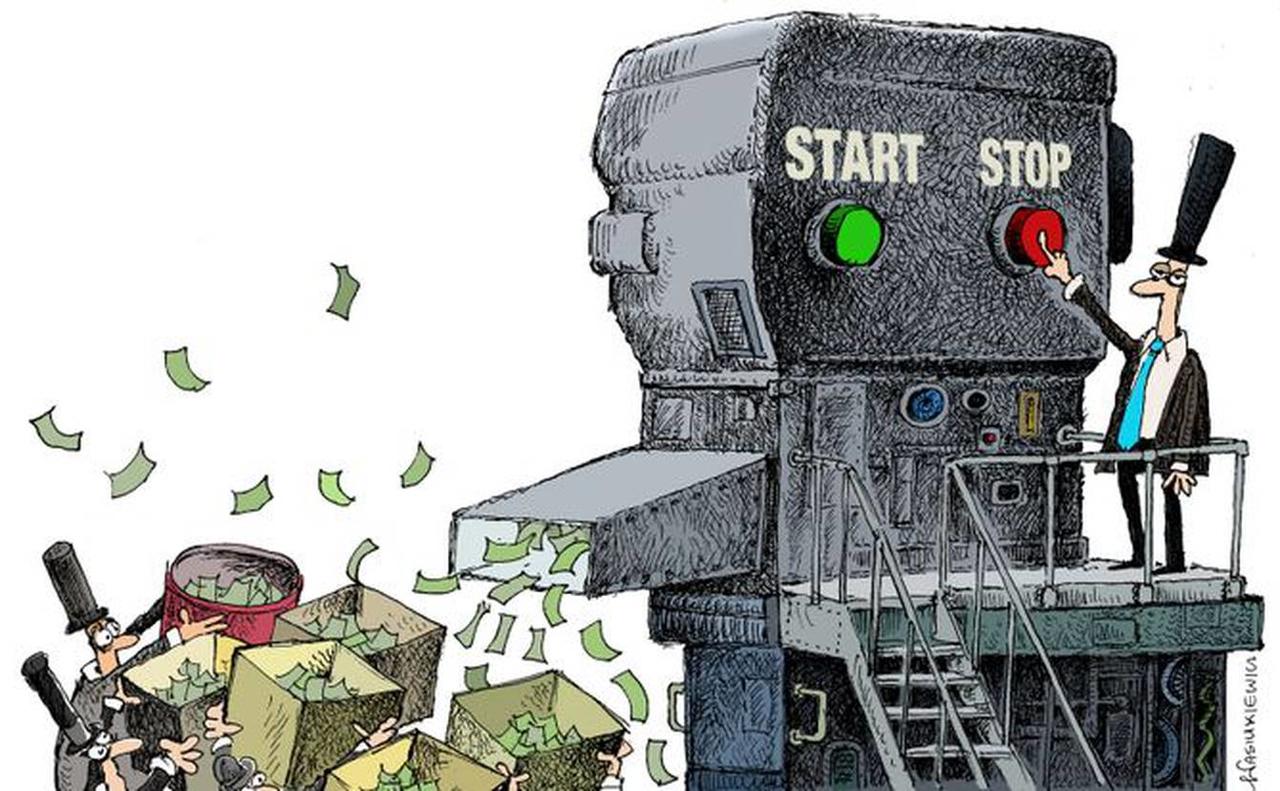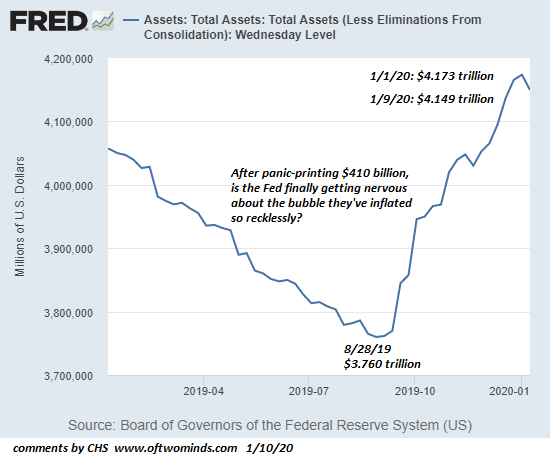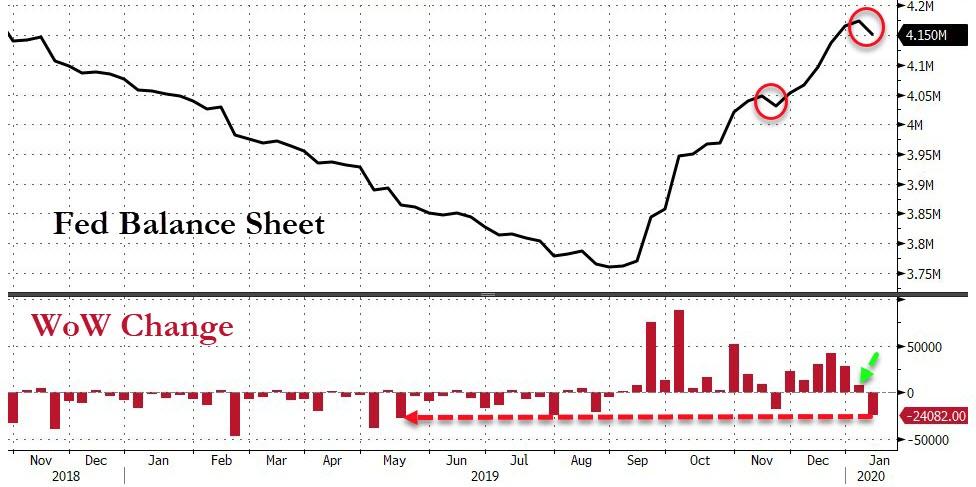Coping With Global (& Local) Chaos: What You Can Control And What You Can’t
Authored by Daisy Luther via The Organic Prepper blog,
Have you been glued to the news lately, nervously watching what’s going on in the Middle East? Are you concerned that World War III is about to kick off at any moment? Is the state of the economy frequently on your mind? Maybe it’s Ebola that keeps you up at night or the risk of a cyberattack or an EMP or that the political party not of your choosing will take over the government.
I’ve seen a lot of people expressing worry and fear. They’re afraid we’re about to get involved in a war. They’re worried about terror attacks and conflicts on American soil. They’re terrified that their sons and daughters will be sent off to risk their lives and limbs in another Afghanistan.
Maybe the media is manipulating you to be in a constant state of fear. When we’re scared, we don’t think clearly or act effectively. I see a lot of fear and I don’t like it. It’s not a useful emotion. It’s not practical. Raging against the machine will not help you to survive anything from a car accident to a mass shooting to a nuclear attack. And I’m all about practicality. So let’s talk this through. You need to shake this off and get control of your thoughts.
Whatever your main concern is, I have bad news and good news.
First, the bad news. There’s not a darn thing you personally can do to prevent the things above from occurring. We are little fish in a big sea full of wealthy predators who are the ones that can actually cause change on those levels.
Now the good news. What we can change are our immediate environments. If you are expending a great deal of energy and emotion, focus it on the things that you can change. These (combined with luck) are the things that will have the biggest effect on whether you live or die.
Selco’s theory of circles
One of the things Selco spoke about last year in the Women’s Urban Survival Course in Croatia was circles. No, it wasn’t a geometry lesson. It was a way of looking at the world that he has learned the hard way.
Imagine different parts of the world as giant circles. You’ve got North America, Europe, the Middle East, etc., etc.
Within those giant circles are smaller circles. To name a few, here in the US, you’ve got different states, you’ve got different movements like pro-gun and anti-gun, you’ve got different political belief systems, you’ve got different religions.
Then you’ve got smaller circles still. You have individual towns, churches, schools, and community organizations.
Then there are the circles that really count the most: your close friends, your family members, your immediate neighborhoods.
The summary of Selco’s lesson was this: When you think about where you personally can make the most changes that will have the greatest effect on your survival, where does your power lie?
That’s right. Within the smallest circles. Those are the things we can actually do something about so completely freaking out over the news is not productive at all.
(By the way, ladies, we still have a couple of spaces open in this year’s Urban Survival Course in Croatia. Go here for more information. I’ll be there and would love to meet you.)
Out of all the lessons we were taught in that week, I think the lesson about focusing our energy on the things we can control just might be the most important one of all.
You should still pay attention to what is going on in the world.
I’m not telling you that you shouldn’t be interested in or follow current events.
On the contrary.
It’s incredibly important to stay informed. But you can’t wallow in it and rail at it to the exclusion of taking common-sense steps.
We need to know what the potential threats are so that we can be prepared for them. We must be aware of what’s going on in the world instead of blithely keeping up with the Kardashians or some other nonsense.
I get my news from a wide variety of websites and generally find the truth lies somewhere in the middle if there’s any truth at all.
So watch the news. Read the articles. But understand two things.
#1) Your power ends at the knowledge of these events.
When the wheels of the government are already in motion, there isn’t a whole lot we as individuals can do to stop them. We are screaming into the void when we rant on social media or website comments sections about being pro-war or anti-war or vent our fury about the mismanagement of the national budget.
Sure, it’s important to be heard and to let the figures pulling the strings know our thoughts about what’s going on.
But if we could really change things, do you think our food supply would be chemically tainted and that our national healthcare would be an unaffordable disgrace to which only the wealthy or the extremely poor have access? Do you think our government would be funding $22,000,000 efforts to bring Serbian cheese up to US standards or spending half a million to study the mating calls of Panamanian frogs?
We can be outraged all we want – and trust me – I am outraged. But I personally only have the power to point out these things. I cannot fix them no matter how much I want to do so. I’m not wealthy. I’m not a powerful politician. My ability to respond is limited to sharing information.
I don’t love it, but that’s reality. And you’ve got to live in reality.
#2) We’re probably being lied to anyway.
Let’s look at a couple of events. The death of Soleimeni and the Las Vegas massacre. Do you really, honestly, deep down in your soul think we got the whole story on either of these events?
Was Soleimeni beloved or hated? It really depends on which news outlet you watch. I saw a lot of people who looked heartbroken when they turned up for his funeral on one news outlet but on others, there were people cheering in the streets. What’s the truth? We’re probably never going to know. The “reality” we’re given depends on the agenda of the news network that shows the footage.
And allegedly, nobody knows what caused Stephen Paddock to open fire on a country music concert in Las Vegas a couple of years back. Heck, many people aren’t even convinced that Paddock was the shooter. I don’t believe for one single second that no motive was ever found for such a horrific crime on such a massive scale, but we won’t get the answers anytime soon, if ever.
We simply cannot rely on the news to accurately inform us. The mainstream media is the modern-day Ministry of Propaganda. You can get a general idea of what’s going on, but don’t expect to learn the true motives behind these events from Fox or CNN or any of the other networks. Everyone’s got a bias. Everyone’s got an agenda.
When Selco talked about the Balkan war, he explained how people were bombarded with propaganda to make them hate and fear their neighbors. Why? Because a war was good for a handful of powerful people. And the little guys lie us got dragged along for a brutal ride on a tidal wave of manufactured rage.
So watch and read, but know that you’re only getting a biased fraction of the real story.
Your power lies in smaller circles.
So far, this article probably seems like a bummer. You are probably wondering why on earth a person who covers current events is writing such an article.
I’m writing it because I see so many people utterly panicking over things beyond their control. We, the ordinary, everyday people, cannot prevent whoever is president, whether it’s Obama or Trump or Bush, from droning the daylights out of a country with nuclear capabilities. We can make our opinions known because sometimes a public outcry works. But we can neither prevent nor insist upon these events.
There’s good news, though.
The thing is, you do have power. You have the power to cause a change in your smaller circles. You can help your community to become better prepared because on smaller levels, in smaller circles, our voices do count for a whole lot more.
And if you aren’t interested in even going that big, you can dial it down to the smallest of circles. Your family, your friends, and your immediate neighbors. People always think that their prepping community has to be a group of self-proclaimed preppers with supplies stacked up to the rooftops.
But that isn’t the case.
There are all sorts of ways to build small circles.
You can build communities in all sorts of ways. From your mail carrier to your neighbor who has laying hens to your other neighbor with the enviable 6-foot tall tomato plants, all of these folks could be valuable friends to have. You can meet with a group of ladies and knit or help a neighbor erect a shed in his backyard with an old-fashioned “barn-raising.”
You build your community by being a decent human being, by helping when you can, and by looking out for one another.
Obviously not all of us have neighbors we’d trust when battening down the hatches and in those situations, we could be better off to be with family members.
But however we do it, by building our inner circles, those small intimate circles, we become stronger. We create communities that will work together to help out another member if he breaks his leg and can’t feed his livestock. Then that member shares the harvest. We build a community that has our backs because they know we will have theirs.
I belonged to the coolest community ever when I lived in California. It was an informal group of homesteaders who got together to teach one another and have potluck dinners and share skills. We became so close-knit that when wildfires drew near, we’d open up pastures for our friends’ livestock if they needed to evacuate and we’d give the humans our spare bedrooms.
Were they all preppers? No, definitely not. Some of them weren’t at all on board with stashing beans and rice and bullets and bandaids. But would I want to hunker down with them if the end of the world was happening? Darned right I would. These were people who gave generously of their time to teach others homesteading skills and answer questions and even pop over to help out at butchering time.
Remember that your small circle doesn’t have to be solely made up of preppers, per se. Sure it would be nice, but in most situations, especially if you’re hunkering down, your community is made up of your closest neighbors. So build relationships with them. You don’t have to tell them you have enough pasta to feed a village in Italy for a year in your basement to build this relationship. But never underestimate the power of a neighbor who has your back.
Be nice to people. Help when you can. Tip decently at your local cafe. Treat others with respect. Seek out those with the same values who are also helpful and respectful. Those are the folks you want around you.
Is this foolproof? Or course not. There are selfish people in the world. There are cowardly people in the world. There are the folks who talk a good talk and are totally on board…until they’re not because a better opportunity came along.
As many of you know, I am traveling full-time right now but I still build some community everywhere I go. I hit up the same bakery or juice bar for breakfast every day and strike up a conversation. I speak to the neighbors. I smile and I make friends. I socialize. I pick up things if someone drops them. I smile and make an effort to communicate even when my grasp of the local language is poor. Basically, I am a decent person and I make real human connections. Because of this, I’ve found that locals give me all kinds of tips, from where to buy the best produce to who produces the best rakija or which doctor I might want to visit for a medical issue.
If I can do that in countries where I don’t even speak the language, you can do this in the town where you live.
Try to focus on what you can control, not on what you can’t control.
In these days when it seems like war is only a heartbeat away, or an EMP could strike at any moment, or a cyber attack could change the world as we know it, or any other epic disaster could occur, sometimes you have to take a step back.
Sometimes, current events are incredibly overwhelming.
When you find yourself getting overwhelmed, take a look at your circles. Are you getting overwhelmed by the big circles you can do nothing about?
If so then it’s time to focus on the small circles. The things you can do are:
-
Become more physically fit.
-
Put back some additional fuel.
-
Buy that Big Berkey you’ve had your eye on.
-
Improve your medical kit.
-
Enhance your skills. Go shooting, learn to can, learn about hunting and foraging. There are many skills that would be useful in a bad situation that you can learn and practice right now.
-
Seek practical information about dealing with a wide variety of potential disasters.
-
Work on your relationships with those around you.
-
Be aware – your situational awareness is your early warning system. Get your face out of your phone and pay attention to what’s happening around you. Here’s a great cautionary tale on situational awareness.
If you’re letting the news cycles drive you into a panic, then it’s time to take a step back. Turn off the television or computer or wherever you get your news. Focus on what you can do – and there’s a lot you can do.
Is World War III about to happen?
We’ve been on this cusp multiple times over the past ten or twenty years. At some point, we’ll probably go over the edge. Will it be this time? I’ve written about the possibility of world war at least a dozen times over the past 7 years because tensions were incredibly high each time.
So far, we’ve been fortunate and all-out world war has not erupted. But for how long will our luck hold out? There’s absolutely no way to know.
All we can know for sure is that we can build strong communities. Perhaps we’re creating local civil defense teams. Maybe we’re getting ready to hunker down with our families. We can network and make friends where we are right now.
For your own sanity and peace of mind, focus on controlling your small circles. Stop expending so much energy and emotion on the things you cannot control. Prepping should give you peace of mind, not a constant anxiety attack. Don’t let the barrage of terrifying headlines send you spiraling into fear. We don’t make good decisions when we’re fearful. Awareness and fear are two entirely different things.
Workable survival plans aren’t big. They aren’t grandiose, national-level movements
They’re small. They are community-oriented at the largest and family-oriented at the smallest. Definitely pay attention to the world around you because you need to be aware of important signs and signals.
But focus your energy on your small circles. Change and enhance the things that are within your power.
Tyler Durden
Fri, 01/10/2020 – 22:25
via ZeroHedge News https://ift.tt/37TvvD7 Tyler Durden

